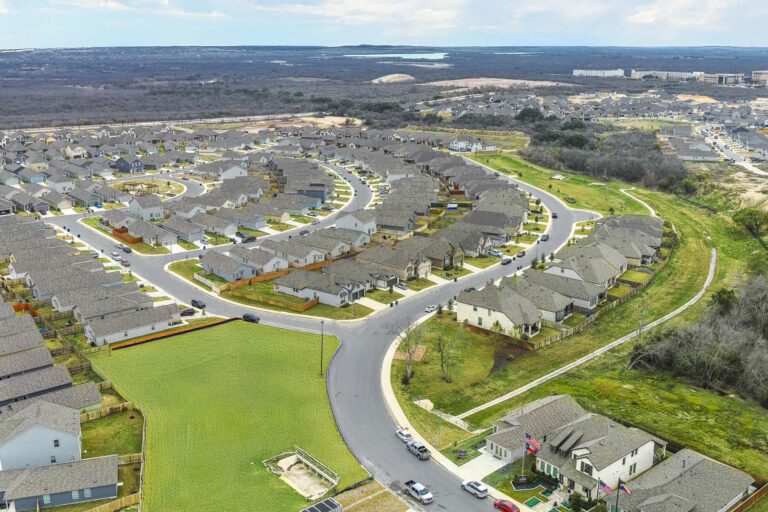Water Availability for Master Planned Communities

As Texas experiences unprecedented population growth, developers are responding by spearheading the rapid expansion of new master-planned communities. To execute this vision effectively, they must secure essential resources through advanced and creative planning. Among these critical considerations, water availability stands as perhaps one of the most vital—and often most challenging—component to address.
A significant obstacle lies in extending water infrastructure into rural corridors. Many of the smaller and/or rural water utility providers struggle with limited financial resources and technical expertise necessary to acquire sufficient water rights or engineer sustainable supply solutions for these emerging areas.
On the other hand, some South Texas developers and municipalities have demonstrated remarkable foresight, implementing strategic water planning approaches that could serve as models for other rapidly growing regions facing similar constraints. This water scarcity creates an uneven development landscape across Texas, with some regions falling behind while others forge ahead.
Current Water Landscape in Texas
Recent regulatory changes have increased the required water supply per residential unit, placing additional pressure on utility companies and their planning operations. These providers must now secure greater resources to meet compliance standards, a task that favors larger market players with superior financial backing and technical expertise. As development increasingly spreads beyond urban centers, water availability becomes progressively scarcer.
Further complicating matters are the stricter environmental and water quality regulations now in place. While these standards rightfully protect critical resources, they significantly increase the costs associated with water treatment and distribution infrastructure. The expense of meeting these elevated requirements adds another layer of complexity when securing sufficient water resources and preparing them for public consumption.

Proactive vs. Reactive Planning
Developers, particularly in emerging markets, must establish robust financial structures dedicated to securing water rights and/or entitlements well in advance. This forward-thinking approach should be incorporated into project schedules, allowing adequate time for completing the necessary steps to obtain water rights. “We need to be ahead of the game—planning requires significant effort and sufficient time allocation when preparing for these developments,” said Burt Wellmann, PE, Regional Discipline Leader (Civil/Site) (pictured right).
This proactive approach is crucial. Developers should identify their available water rights and necessary entitlements early, as the quantity secured through these rights can directly supplement the water supply. Texas manages water rights through a formal process similar to mineral rights for oil and gas. The state designates specific regions as Certificate of Convenience and Necessity (CCN) areas, overseen by public or private utility entities. Securing water rights requires determining whether a development falls within these CCNs, as each has unique application procedures.
For properties within existing CCNs, developers should initiate the process approximately one year before development begins. Projects outside established CCNs that may require forming new Municipal Utility Districts or perhaps even establishing a new CCN typically demand a more extensive timeline—generally two to three years minimum.
Failing to adequately plan for water demand and pressure zones—particularly in high-growth potential areas—creates a dangerous reactive approach that can severely impact development timelines. When utility providers and developers lack foresight in water resource planning, projects frequently encounter delays as systems reach capacity limits, forcing development to halt until infrastructure improvements can be implemented or new water rights can be secured.
Conservation and Efficiency
Texas communities with successful water conservation programs, like San Antonio Water System (SAWS), combine public education with consistent enforcement mechanisms, implementing clearly defined water restrictions during drought conditions. Technological advancements complement these efforts, with high-efficiency plumbing fixtures, digital monitoring and sophisticated irrigation systems dramatically reducing consumption across households and neighborhoods.

Evolution in landscaping practices further supports conservation through xeriscaping, native plant selections, and mandatory “zero-scape” zones that require no supplemental watering once established. Meanwhile, recycled water programs are gaining momentum statewide, repurposing treated wastewater for non-potable uses and reducing demands on drinking water supplies.
These combined approaches—education, enforcement, efficient technology, appropriate landscaping, and water recycling—create a comprehensive framework that preserves vital water resources while supporting community growth.
Future Outlook
The future will likely demand substantial capital investment in transformative infrastructure projects designed to address regional water imbalances. “There will be some high-stakes projects needed to essentially get water from areas where it’s abundant to areas where it’s not,” Wellmann suggests. “In the not-so-distant future we’ll likely see significant capital dollars invested into large-scale water projects such as major transmission lines, and even desalination plants that convert salt water from the oceans into freshwater supplies.”
As development pressure intensifies, addressing these water availability challenges will require innovative and collaborative solutions between developers, utility providers, and regional planners to ensure sustainable growth. The future of Texas’s expanding communities depends on resolving and sustaining this fundamental resource.
About the Expert
Burt Wellmann, PE, serves as Regional Discipline Leader for Civil/Site engineering and brings extensive expertise across all facets of land development. His portfolio includes management of numerous high-profile projects, including master-planned communities, throughout the greater San Antonio region. Wellmann’s technical background encompasses the design and management of complex street and drainage projects, as well as comprehensive water and wastewater systems. Wellmann has built an impressive career specializing in residential land development projects, demonstrating particular skill in coordinating complex interactions between utility providers and both public and private stakeholders.
